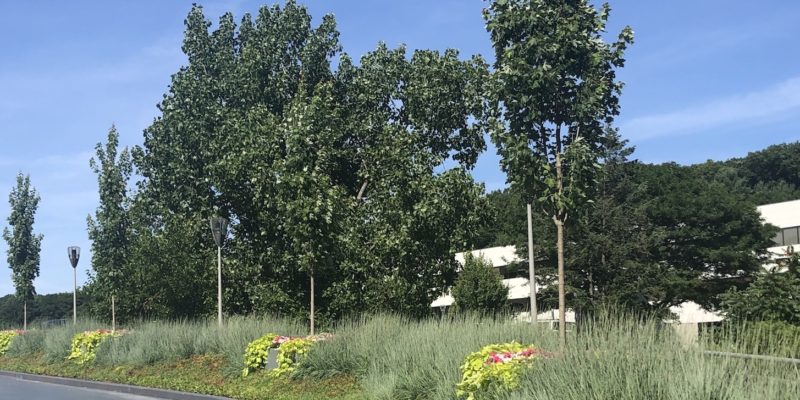Sustainable practices are among the core of ELM’s landscape maintenance services portfolio. For commercial real estate owners and property management companies pursuing LEED or green build credits, this means you have with ELM as your landscape maintenance partner a broad range of expertise to help you improve your environmental footprint and maximize your return on investment.
Here’s how.
Corporate campuses, educational facilities, public spaces, healthcare and hospitality properties are good examples of how landscape maintenance practices, such as stormwater filtration, pollinator habitat, water management, and integrative tree and plant health care can improve ‘green’ metrics and your property’s environmental stewardship.
Initially, LEED, an acronym for Leadership in Energy and Environmental Design, was developed by the U.S. Green Building Council to set benchmarks for design, construction and operation. Over the years, the certification program has expanded to take into consideration the overall energy efficiency of the site, including ways landscape practices, green technologies and the use of alternative fuels can help meet key LEED criteria and site performance goals.
ELM’s green performance plan addresses:
Irrigation and Stormwater Management: Water efficient landscaping, the use of computerized irrigation and smart technologies, using less thirsty native plants, converting underperforming turf to naturalized perennial meadow plantings, replacing hardscapes with permeable surfaces, and constructing drainage solutions, erosion control mechanisms, and creating landscaped bioswales and retention ponds.
IPM: Integrated pest management, part of an overall plant health care program, focuses on plant and soil health and cultural practices to reduce weeds, prevent invasive species, manage pest damage, encourage beneficial insects, reduce toxicity in the soil and air, and protect water quality in watersheds and riparian zones
Green Roofs: Converting elevated platforms, such as surface areas over underground parking, or building roof areas, to a functional landscaped tenant amenity space is a strategic way to cut down on urban heat island effect, cool air and surface temperatures overall, reduce the use of building air conditioning, and absorb and filter water for less runoff.
Summer is prime outdoor upgrade season in the northeast. For cost-effective ideas to earn LEED credits from landscaping and help you meet your annual corporate sustainability goals, contact Bruce Moore Jr. at 203-316-5433.
Photo: One of our commercial mixed-use property clients pursuing LEED accreditation recently implemented a well-defined drought tolerant planting strategy, using a mix of ornamental grasses, sweet potato vine, annual vinca and sedum on vehicular and pedestrian overpass.

